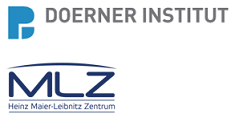Speaker
Description
This work concerns the analytical phase of a project exploiting Synchrotron Radiation X-ray fluorescence (SR-XRF) spectrometry for the study of the composition of gold coins (Solidi) of the late Roman period. It is a project conducted at the Elettra Synchrotron in Trieste, on the study of the Treasure of Como: an exceptional discovery of 1000 late-imperial Roman coins (ca. 402-472 AD), found in 2018 in Northern Italy [1]. The research involves different professionals ranging from an archaeometric perspective that considers expertise from archaeology and numismatic to diagnostic, from physics and chemistry to science of materials.
The current study aims to investigate the composition and trace elements (Ag, Cu, Pt, Pd, Os, Ir, Ru, Rh, Sn, ...) of the coins issued in different mints and under different emperors, to obtain information on the raw materials and processes of making ancient gold. The sine qua non requirement was to adopt a totally non-invasive protocol, for this reason SR-XRF analysis was chosen to achieve the required sensitivity for trace element detection due to the high photon flux provided.
Also, a relevant aspect of this study was to use coins found in a well-defined archaeological context, as in the case of the Treasury of Como. The Treasury comes from an archaeological context known in its entirety and of which, thanks to studies already carried out, the mint of origin and date of issue are known. The context gives us more information about the association of coins, that is, it photographs the composition of the coins circulating at a given time, also allows us to date the concealment and to make proposals on the identity of those who have hidden the Treasury as well as making assumptions about the nature of the archaeological context.
The main challenge of the study discussed here is due to the high purity of Solidi. In fact, their high content of gold, close to 100% in weight, makes the trace elements hardly detectable. This, combined with the low penetration depth of X-rays in such a heavy matrix, have created an objective complexity in the quantitative determination of trace elements.
A recent XRF study on gold coins has adopted different approaches, such as subtracting pure gold reference spectrum from the spectra of each coin to solve signal overlapping issues [2] or using wavelength dispersion technique, allowing to achieve a spectral resolution capable of detecting trace elements [3]. In this context, the GOLD CoINS (GOLD Como INterdisciplinary Study) approach consisted of adopting reference materials with similar composition with coins or with variable content of elements of interest for defining the best measurement conditions in detecting trace elements. Three beam energies have been used to ensure a good detection of trace element-related signals useful to provide information on the compositional differences of coins and to enable the development of the next phase of statistical data analysis.
[1] G.Facchinetti, 2022, Il Tesoro di Como. Via Diaz 2018, Notiziario del Portale Numismatico dello Stato, 16.
[2] I.Carlomagno, P.Zeller, M.Amati, G.Aquilanti, E.Prenesti, G.Marussi, M.Crosera, G.Adami, 2022, Combining synchrotron radiation techniques for the analysis of gold coins from the Roman Empire, Scientific Reports, 12, 15919.
https://doi.org/10.1038/s41598-022-19682-8
[3] M.F.Guerra, E.Neri, M.Radtke, 2023, Gold leaf tesserae: tracing the origins of gold using synchrotron-based techniques, The European Physical Journal Plus, 138, 127.
https://doi.org/10.1140/epjp/s13360-022-03638-y

